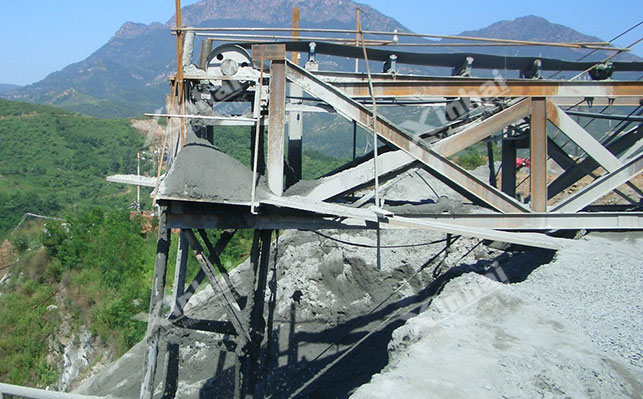Commonly used dewatering equipment for tailings dry discharge include: hydrocyclone, deep cone thickener, high-efficiency thickener, tailings vibration dewatering screen and filter. So, what are the characteristics of these dewatering equipment, and how to combine them to achieve better dewatering effect?
This equipment combination makes full use of the difference in tailings particle size, preferentially concentrates large particles, improves the processing capacity of the thickener, reduces the diameter of the thickener, and saves investment, but the concentration of the discharged tailings is not too high and it is not easy to dry pile.

The mine tailings dewatering equipment combination can obtain materials with lower water content to achieve the purpose of direct dry discharge and is easy to transport. It is worth noting that the tailings dewatering equipment combination needs to use a large-sized thickener, which occupies a large area and has high investment, so it is not suitable for tailings dewatering treatment in large and medium-sized mineral processing plants.
The advantage of the mine tailings dehydration equipment combination is that the dehydration of the cyclone greatly reduces the workload of the concentrator, which can clarify the overflow water of the concentrator and avoid turbidity. At the same time, it also reduces the specifications of the concentrator and occupies a small area, thereby reducing investment costs. However, the filter has a large workload and needs to be equipped with a large-size filter or multiple filters, which has high energy consumption.
The mine tailings dehydration equipment combination uses a dehydration screen for dehydration, which reduces the filter equipment, saves electricity and reduces investment costs. However, the fine-grained materials under the dehydration screen return to the concentrator to form an infinite cycle, affecting the concentration effect, making the concentrated clarified water turbid, and finally discharging the screened materials of the dehydration screen into the tailings pond, failing to achieve full dry discharge.
The mine tailings dewatering equipment combination uses a cyclone and a dewatering screen to first sort and dehydrate the coarse and heavy particles and then dry discharge, which reduces the workload of the concentrator and filter, and correspondingly reduces the specifications of the concentrator and filter, occupies a small area, and reduces the investment cost. The undersize of the dewatering screen is fed into the filter to ensure solid-liquid separation, which is convenient for all dry discharge to achieve long-distance transportation of tailings. The drainage and washing water of the filter return to the concentrator, which not only ensures the content of solid particles in the recycled water, but also meets the quality of production water.
The above equipment combinations have their own advantages. The combination method can be determined according to the particle size and physical and chemical properties of the tailings itself. The tailings sedimentation test can be carried out first, and the tailings dry discharge plan can be specified by a professional manufacturer to obtain a better dewatering effect.